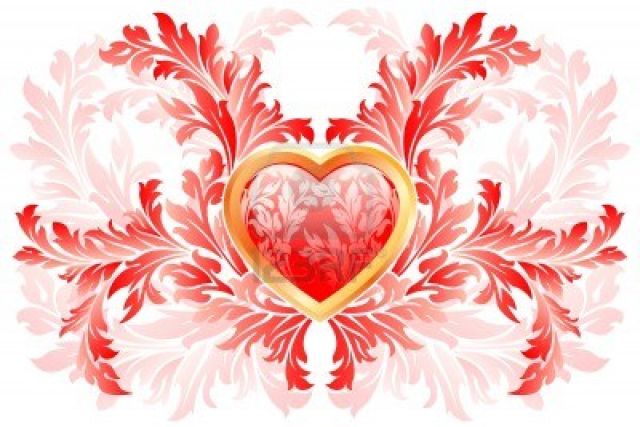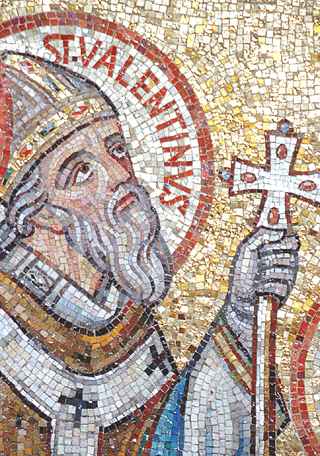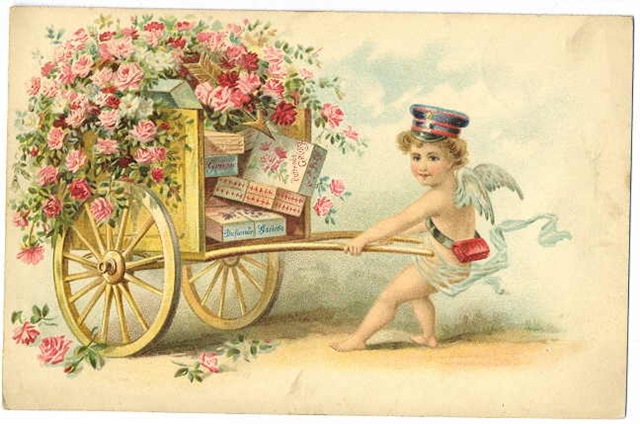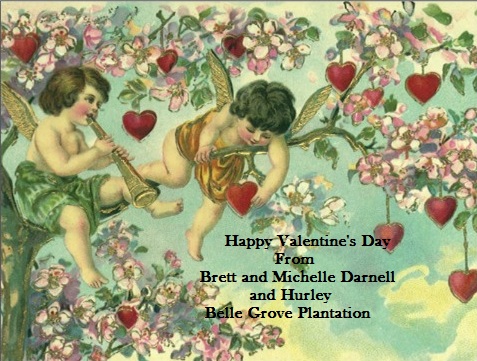The Legend of St. Valentine
We all know Valentine’s Day. Flowers, Candy, Cards, Gifts of Love and Dinners out.
But do you know the history of the holiday?
I thought I would share the history of why we celebrate Valentine’s Day!
The Legend of St. Valentine
The history of Valentine’s Day–and the story of its patron saint–is shrouded in mystery. We do know that February has long been celebrated as a month of romance, and that St. Valentine’s Day, as we know it today, contains vestiges of both Christian and ancient Roman tradition. But who was Saint Valentine, and how did he become associated with this ancient rite?
The Catholic Church recognizes at least three different saints named Valentine or Valentinus, all of whom were martyred. One legend contends that Valentine was a priest who served during the third century in Rome. When Emperor Claudius II decided that single men made better soldiers than those with wives and families, he outlawed marriage for young men. Valentine, realizing the injustice of the decree, defied Claudius and continued to perform marriages for young lovers in secret. When Valentine’s actions were discovered, Claudius ordered that he be put to death.
Other stories suggest that Valentine may have been killed for attempting to help Christians escape harsh Roman prisons, where they were often beaten and tortured. According to one legend, an imprisoned Valentine actually sent the first “valentine” greeting himself after he fell in love with a young girl–possibly his jailor’s daughter–who visited him during his confinement. Before his death, it is alleged that he wrote her a letter signed “From your Valentine,” an expression that is still in use today.
Although the truth behind the Valentine legends is murky, the stories all emphasize his appeal as a sympathetic, heroic and–most importantly–romantic figure. By the Middle Ages, perhaps thanks to this reputation, Valentine would become one of the most popular saints in England and France.
Origins of Valentine’s Day: A Pagan Festival in February
While some believe that Valentine’s Day is celebrated in the middle of February to commemorate the anniversary of Valentine’s death or burial–which probably occurred around A.D. 270–others claim that the Christian church may have decided to place St. Valentine’s feast day in the middle of February in an effort to “Christianize” the pagan celebration of Lupercalia. Celebrated at the ides of February, or February 15, Lupercalia was a fertility festival dedicated to Faunus, the Roman god of agriculture, as well as to the Roman founders Romulus and Remus.
To begin the festival, members of the Luperci, an order of Roman priests, would gather at a sacred cave where the infants Romulus and Remus, the founders of Rome, were believed to have been cared for by a she-wolf or lupa. The priests would sacrifice a goat, for fertility, and a dog, for purification. They would then strip the goat’s hide into strips, dip them into the sacrificial blood and take to the streets, gently slapping both women and crop fields with the goat hide. Far from being fearful, Roman women welcomed the touch of the hides because it was believed to make them more fertile in the coming year. Later in the day, according to legend, all the young women in the city would place their names in a big urn. The city’s bachelors would each choose a name and become paired for the year with his chosen woman. These matches often ended in marriage.
Valentine’s Day: A Day of Romance
Lupercalia survived the initial rise of Christianity and but was outlawed—as it was deemed “un-Christian”–at the end of the 5th century, when Pope Gelasius declared February 14 St. Valentine’s Day. It was not until much later, however, that the day became definitively associated with love. During the Middle Ages, it was commonly believed in France and England that February 14 was the beginning of birds’ mating season, which added to the idea that the middle of Valentine’s Day should be a day for romance.
Valentine greetings were popular as far back as the Middle Ages, though written Valentine’s didn’t begin to appear until after 1400. The oldest known valentine still in existence today was a poem written in 1415 by Charles, Duke of Orleans, to his wife while he was imprisoned in the Tower of London following his capture at the Battle of Agincourt. (The greeting is now part of the manuscript collection of the British Library in London, England.) Several years later, it is believed that King Henry V hired a writer named John Lydgate to compose a valentine note to Catherine of Valois.
Typical Valentine’s Day Greetings
In addition to the United States, Valentine’s Day is celebrated in Canada, Mexico, the United Kingdom, France and Australia. In Great Britain, Valentine’s Day began to be popularly celebrated around the 17th century. By the middle of the 18th, it was common for friends and lovers of all social classes to exchange small tokens of affection or handwritten notes, and by 1900 printed cards began to replace written letters due to improvements in printing technology. Ready-made cards were an easy way for people to express their emotions in a time when direct expression of one’s feelings was discouraged. Cheaper postage rates also contributed to an increase in the popularity of sending Valentine’s Day greetings.
Americans probably began exchanging hand-made valentines in the early 1700s. In the 1840s, Esther A. Howland began selling the first mass-produced valentines in America. Howland, known as the “Mother of the Valentine,” made elaborate creations with real lace, ribbons and colorful pictures known as “scrap.” Today, according to the Greeting Card Association, an estimated 1 billion Valentine’s Day cards are sent each year, making Valentine’s Day the second largest card-sending holiday of the year. (An estimated 2.6 billion cards are sent for Christmas.) Women purchase approximately 85 percent of all valentines.
(This article is from History website – http://www.history.com/topics/valentines-day)


















Fascinating, I knew of the Lupercalia but not its connection to Valentine’s. Brilliant post, thank you!
Thank you! I love history and sharing it.
I have always loved the vintage cards from Valentine’s Day. Of course I love anything vintage and antique. today i was lucky enough to pick up an antique tall square table with nice decorative backdrop. I fell in love with the thick oak boards. It has one drawer with a nice pull and very tall legs. it is oak but has an old varnish of darker oak on it. I will most likely not refinish it
Wow, I bet that is beautiful!
smiles and hugs to you
And same back at you! 😉
Reblogged this on Simon Sundaraj-Keun.
Thank you so much for sharing us so much! It really means a lot to us!
Nicely researched. Thank you!
Thank you!
Happy valentines!
Happy Valentines Day! Hurley says give the girls a hug from him!
Nice work, thank you for the history lesson. 😉
You are so welcome!
Exactly what I like to read – something specific – history – very well done! Thank you for taking the time to teach us all about a holiday we all have odd notions about.
Elephant
You are so welcome! I love history and it is fun to see where things come from.
That was a great read. Thanks! I’ll pass it along.
You are so welcome! Thank you for stopping by!
Thanks for the nice history behind Valentine’s Day.
You are welcome! Thank you!
Beautiful post! Being Catholic, I’ve heard most of this. History is always SO interesting to me 🙂
Thank you! We love history too!
Reblogged this on joeccombs2nd.
Your Valentine’s recollection brings more meaning to the celebration on February 14th. Excellent historical research!
Thank you! It is always good to know where things come from in history.
Lovely post. I enjoyed the lesser known facts and the photos from times gone by.
I second this. So interesting, and took some time to compose this one. –Aggie
Thank you!
Thank you! We love history in all forms!
Fascinating!
Thank you!
wow! Thanks for doing the research 😀
You are welcome! Thank you for stopping by!
Really enjoyed those vintage Valentines! Thank you!
Thank you! They are really beauitful!
Thanks for sharing this. It’s funny how very few people (myself included) actually know the real history behind this day. Now I know 🙂
You are so welcome! I really enjoy history of all kind. Thank you for stopping by!
I have so much enjoyed following your progress this past year or so and would like to nominate your blog for the Beautiful Blogger Award. Would you mind?
Thank you so much! I have to say we get these awards quite often. Believe us, we are really honored that we are thought of so often! But if we did each one of them, there would be only those on the blog. But thank you so much! We really appreciate it!
Beautiful post! Thank you so much for taking time to write the history! Very fascinating.
Thank you!
I did enjoy reading that and the lovely pictures too – thank you so much for posting it.
You are so welcome! Thank you for reading it 🙂
Interesting. I love those vintage Valentine cards.
Thank you! I do too!
very interesting information. thankyou x
Thank you! You are so welcome!
Fascinating! I had no idea. Thank you for the Valentine’s Day History. I hope that you had a great one!
Thank you! I hope you did too! It’s always nice to see where holidays come from!
[…] The Legend of St. Valentine (virginiaplantation.wordpress.com) […]
Thank you so much for sharing our blog with your readers! We really appreciate it!
There was a display at the Opera House in Woodstock, Illinois, over Groundhog Day this year. It said Valentine’s Day originated from what you list as your first and second legends. In other words, it all happened to the same guy named Valentine.
Yes that would be correct.
I love your post! Much more informative than any of the sites I searched for at Valentine’s Day… thank you!
Thank you! We love to share holiday history!